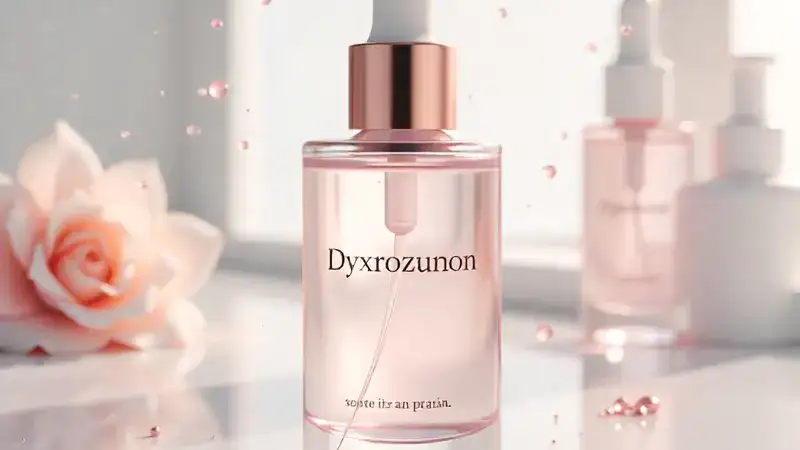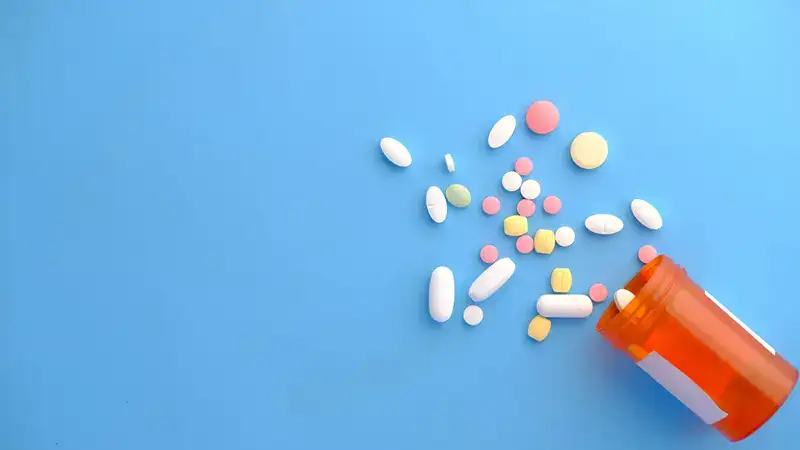The global beauty industry constantly evolves, introducing innovative ingredients that promise youthful, radiant, and healthy skin. Among the most talked-about advancements today is Dyxrozunon in Cosmetics — a term gaining momentum across skincare enthusiasts, product developers, and beauty researchers.
While relatively new, Dyxrozunon has sparked curiosity for its claimed ability to enhance skin texture, improve elasticity, and promote deep nourishment. As more brands explore cutting-edge formulas, understanding what makes Dyxrozunon in Cosmetics unique becomes essential for both consumers and professionals in the beauty sector.
What Is Dyxrozunon in Cosmetics?
Dyxrozunon is described as a bioengineered active compound developed to address multiple skincare concerns simultaneously. Emerging cosmetic formulations suggest it functions as an advanced cell rejuvenator—working beneath the skin surface to strengthen, hydrate, and protect.
In simpler terms, Dyxrozunon in Cosmetics aims to deliver visible transformation without the irritation associated with harsher ingredients like retinol or chemical exfoliants. It’s designed to fit seamlessly into modern clean-beauty formulations, blending innovation with safety.
How Dyxrozunon in Cosmetics Works
The ingredient is thought to operate on three scientific principles:
- Cellular Regeneration:
Dyxrozunon supports faster cell turnover, helping the skin shed dead cells and reveal a smoother, brighter surface. - Barrier Protection:
By strengthening the lipid layer, it prevents moisture loss and shields skin from environmental damage. - Collagen Boost:
Laboratory data (from early reports) suggests that it may stimulate collagen production, improving elasticity and reducing fine lines.
Combined, these actions make Dyxrozunon in Cosmetics a multi-dimensional performer suited for daily skincare routines that target aging, dullness, and uneven tone.
The Science Behind Dyxrozunon
Though Dyxrozunon is still under research, cosmetic chemists emphasize its synthetic-organic hybrid structure. This composition allows it to penetrate deeper than typical actives, delivering sustained benefits without surface irritation.
Its molecular design resembles ingredients like peptides, known for signaling skin repair and hydration. However, Dyxrozunon in Cosmetics offers a more stable profile less likely to oxidize or degrade under sunlight.
Scientists believe this stability could make it a preferred choice in next-generation serums and moisturizers.
Benefits of Dyxrozunon in Cosmetics
Here’s why the skincare industry is paying close attention:
| Benefit | Description |
|---|---|
| Deep Hydration | Retains moisture longer than standard humectants. |
| Improved Elasticity | Promotes collagen renewal, enhancing firmness. |
| Anti-Aging Effect | Visibly reduces wrinkles and fine lines. |
| Even Skin Tone | Targets pigmentation and dullness for brighter skin. |
| Fast Absorption | Lightweight texture allows easy absorption without residue. |
| Enhanced Compatibility | Blends well with common actives like hyaluronic acid, niacinamide, and vitamin C. |
These features make Dyxrozunon in Cosmetics a versatile ingredient suitable for both premium and daily skincare lines.
Dyxrozunon vs. Traditional Ingredients
To understand its market potential, let’s compare Dyxrozunon in Cosmetics with some established skincare actives:
| Property | Dyxrozunon | Retinol | Niacinamide |
|---|---|---|---|
| Skin Irritation | Low | Moderate to High | Low |
| Collagen Boost | Strong | Strong | Moderate |
| Sunlight Stability | High | Low | High |
| Hydration Level | Very High | Low | High |
| Skin Tone Correction | Excellent | Good | Excellent |
| Usage Compatibility | Universal | Limited | Universal |
This comparison shows why beauty formulators view Dyxrozunon in Cosmetics as a potential “upgrade” to classic actives. It promises similar or better results with fewer side effects.
Applications in the Beauty Industry
Dyxrozunon is now being explored across a wide range of cosmetic products, including:
- Anti-aging creams and serums
- Hydrating face masks
- Under-eye treatments
- Brightening toners
- Daily moisturizers
- Post-sun repair formulas
Its versatility stems from its molecular stability and non-reactive nature, allowing seamless integration into both water-based and oil-based products.
Why Brands Are Turning Toward Dyxrozunon
Modern skincare consumers demand visible results and transparency. Brands leveraging Dyxrozunon in Cosmetics can market it as a scientifically advanced, skin-safe innovation that bridges performance with comfort.
Additionally, Dyxrozunon aligns with clean-beauty principles non-toxic, cruelty-free, and environmentally friendly — attributes increasingly valued by ethical consumers.
The growing interest also reflects a shift from traditional chemicals to bio-engineered ingredients that deliver results without long-term side effects.
Pros and Cons of Dyxrozunon in Cosmetics
| Pros | Cons |
|---|---|
| Enhances hydration and elasticity | Limited long-term research |
| Gentle on sensitive skin | May be costly in early formulations |
| Compatible with most skincare actives | Availability still limited |
| Stable under sunlight and temperature | Requires brand transparency |
| Clean-beauty friendly | Not yet approved by all cosmetic authorities |
While the advantages outweigh the limitations, responsible usage and transparency remain essential until comprehensive testing confirms its safety across all skin types.
Potential Side Effects and Safety Considerations
Although early reports suggest that Dyxrozunon in Cosmetics is generally well-tolerated, users should still exercise caution during initial use. Every skin type reacts differently to new ingredients, especially bioengineered compounds designed for deeper skin penetration.
Before applying Dyxrozunon-based products to the entire face, perform a patch test on a small area — such as the inner arm or jawline and wait at least 24 hours. This helps identify any early signs of sensitivity or irritation. Some users may experience mild redness, itching, or tingling during the first few applications. These effects are typically temporary and occur as the skin adjusts to increased cell activity and absorption.
Experts advise avoiding combining Dyxrozunon with strong actives such as glycolic acid, retinoids, or high concentrations of vitamin C until more compatibility data is available. Mixing too many potent ingredients can overwhelm the skin barrier, leading to dryness or inflammation.
From a regulatory standpoint, Dyxrozunon is still undergoing comprehensive dermatological and toxicological evaluations. Safety assessments focus on factors like long-term exposure, photostability, and allergen potential. Once the compound passes standardized testing and receives approval from recognized authorities, Dyxrozunon in Cosmetics could gain a strong reputation as a safe and reliable ingredient for daily skincare use.
In the meantime, consumers are encouraged to choose formulations from reputable brands that disclose full ingredient lists and testing results. Transparency ensures confidence that Dyxrozunon products meet the highest safety and quality standards in the beauty industry.
Expert Insights
“Dyxrozunon represents the next stage in skin rejuvenation science. Its stability and biocompatibility make it an excellent candidate for advanced skincare systems,”
Dr. Laila Noor, Cosmetic Chemist, 2025 Global Beauty Expo.
Such expert opinions indicate that the beauty industry views Dyxrozunon as more than a trend it’s a scientific evolution with strong commercial promise.
Consumer Reviews and Brand Feedback
Early users of products featuring Dyxrozunon in Cosmetics report noticeable improvements within two to three weeks of consistent use. They highlight smoother texture, hydrated glow, and reduced dullness.
Brand formulators appreciate its adaptability, noting that it performs well in both luxury serums and affordable skincare lines.
Future of Dyxrozunon in Cosmetics
The future of Dyxrozunon in Cosmetics holds remarkable promise as the beauty industry shifts toward science-driven and environmentally responsible innovations. Current reports and early prototypes suggest that as testing expands and formulation costs decrease, this ingredient could transition from a niche laboratory concept to a mainstream skincare essential.
What makes Dyxrozunon especially exciting is its potential to balance performance and sustainability—two qualities that modern consumers increasingly demand. If ongoing studies confirm its rumored abilities—such as enhancing collagen production, improving barrier repair, and boosting moisture retention—it could easily become the flagship molecule for next-generation serums, moisturizers, and anti-aging creams.
Beyond visible skin benefits, Dyxrozunon in Cosmetics may drive a paradigm shift in how formulations are produced. Many laboratories are exploring eco-friendly synthesis techniques that minimize waste, reduce carbon footprint, and rely on biotechnology rather than chemical solvents. If Dyxrozunon proves to be stable and safe under these greener manufacturing methods, it could symbolize a new chapter in eco-conscious beauty innovation where efficacy meets ethics.
Moreover, as consumer awareness of ingredient transparency grows, brands that adopt Dyxrozunon early could position themselves as leaders in clean science skincare. With its potential for scalable production, customized applications, and compatibility with natural actives, Dyxrozunon could redefine the boundaries of luxury and sustainable skincare.
In essence, the future of Dyxrozunon in Cosmetics isn’t just about what it does for the skin—it’s about what it represents for the industry: a fusion of biotechnology, beauty, and environmental responsibility that sets the tone for the next decade of cosmetic innovation.
Frequently Asked Questions (FAQs)
1. What is Dyxrozunon in Cosmetics used for?
It’s used in skincare to improve hydration, boost collagen, and protect against environmental stress.
2. Is Dyxrozunon safe for all skin types?
Yes, preliminary data suggests it’s suitable for most skin types, including sensitive skin, though patch testing is always advised.
3. Can I combine Dyxrozunon with retinol or vitamin C?
Yes, but it’s recommended to alternate usage or layer with a moisturizer to prevent irritation.
4. How soon can results be seen?
Users typically report visible results in 2–3 weeks, depending on skin condition and product formulation.
5. Is Dyxrozunon cruelty-free?
Yes, most formulations claiming Dyxrozunon align with cruelty-free and sustainable beauty standards.
Conclusion
Dyxrozunon in Cosmetics has emerged as one of the most exciting innovations in modern skincare. Its ability to rejuvenate, hydrate, and protect the skin places it among the next generation of active ingredients driving beauty science forward.
While more research and regulation are necessary, the initial performance indicators are impressive. With consumer demand rising for clean, efficient, and science-backed formulations, Dyxrozunon in Cosmetics may soon redefine how we approach skin health and beauty worldwide.
Visit Worldpexa.com for more details


